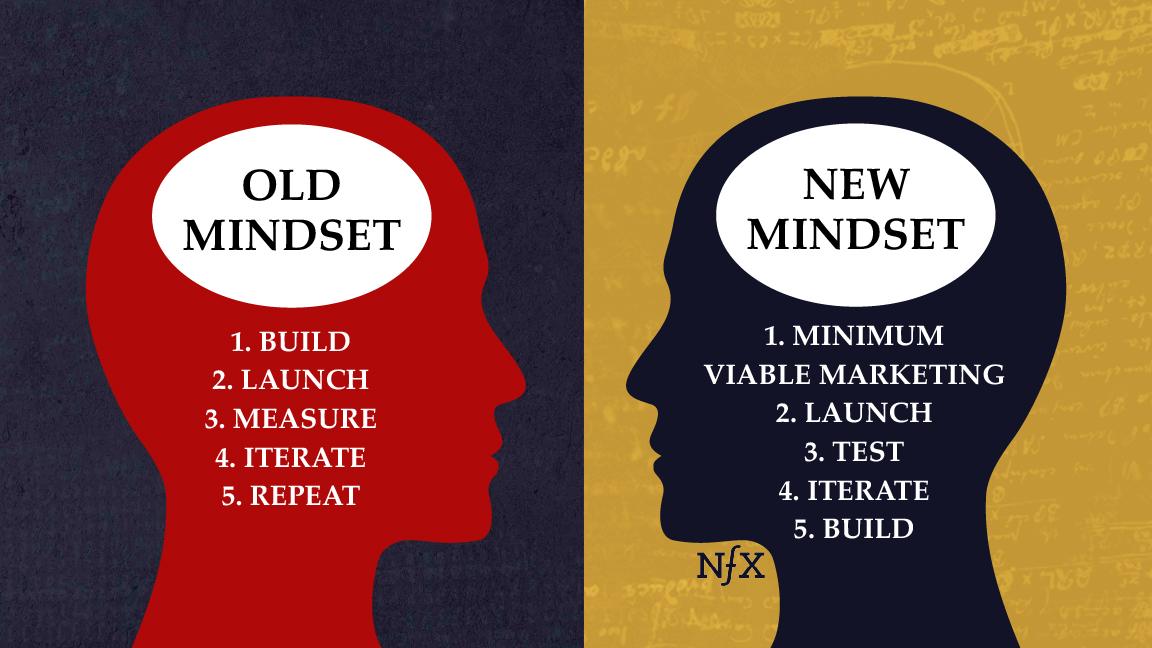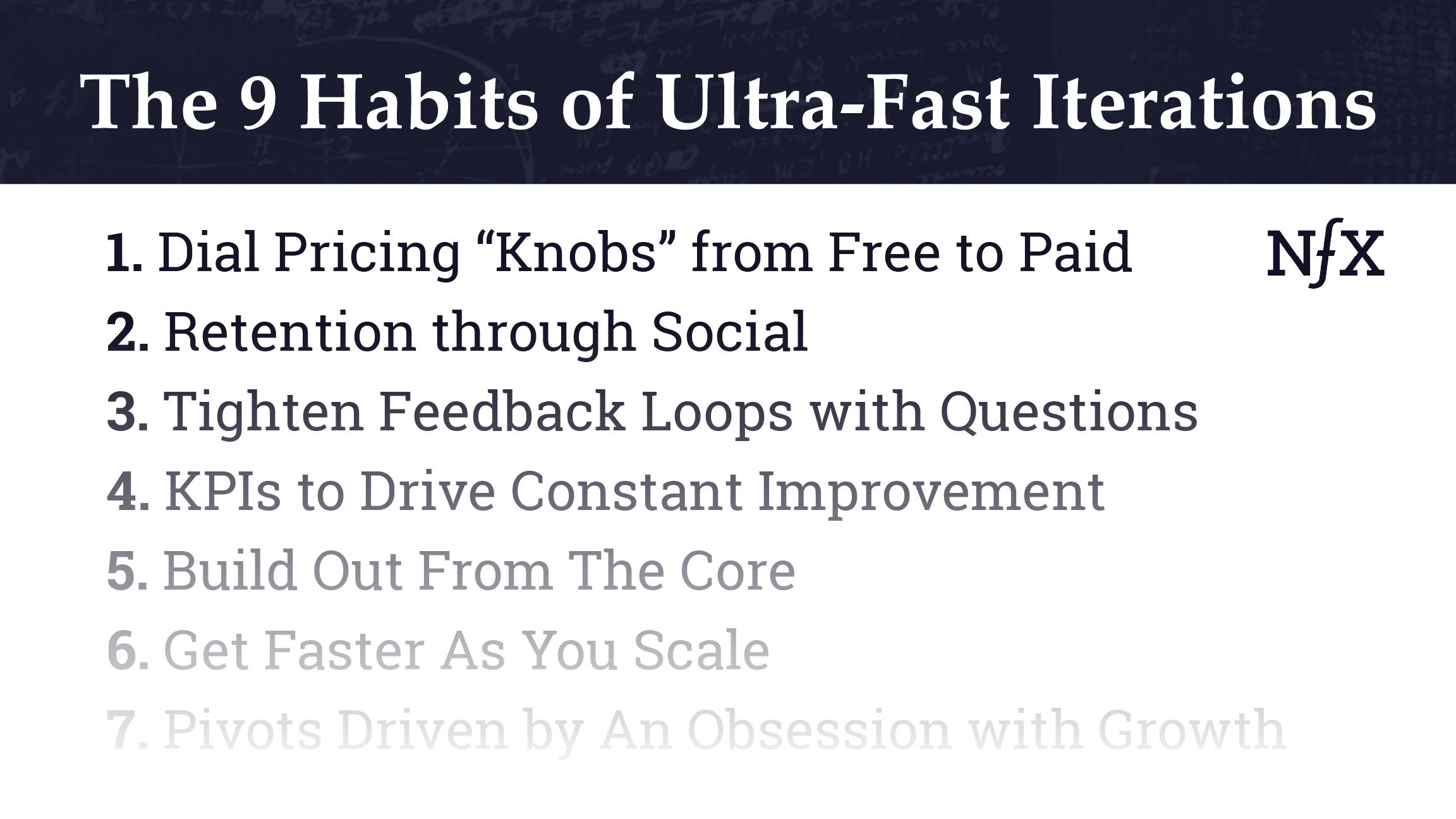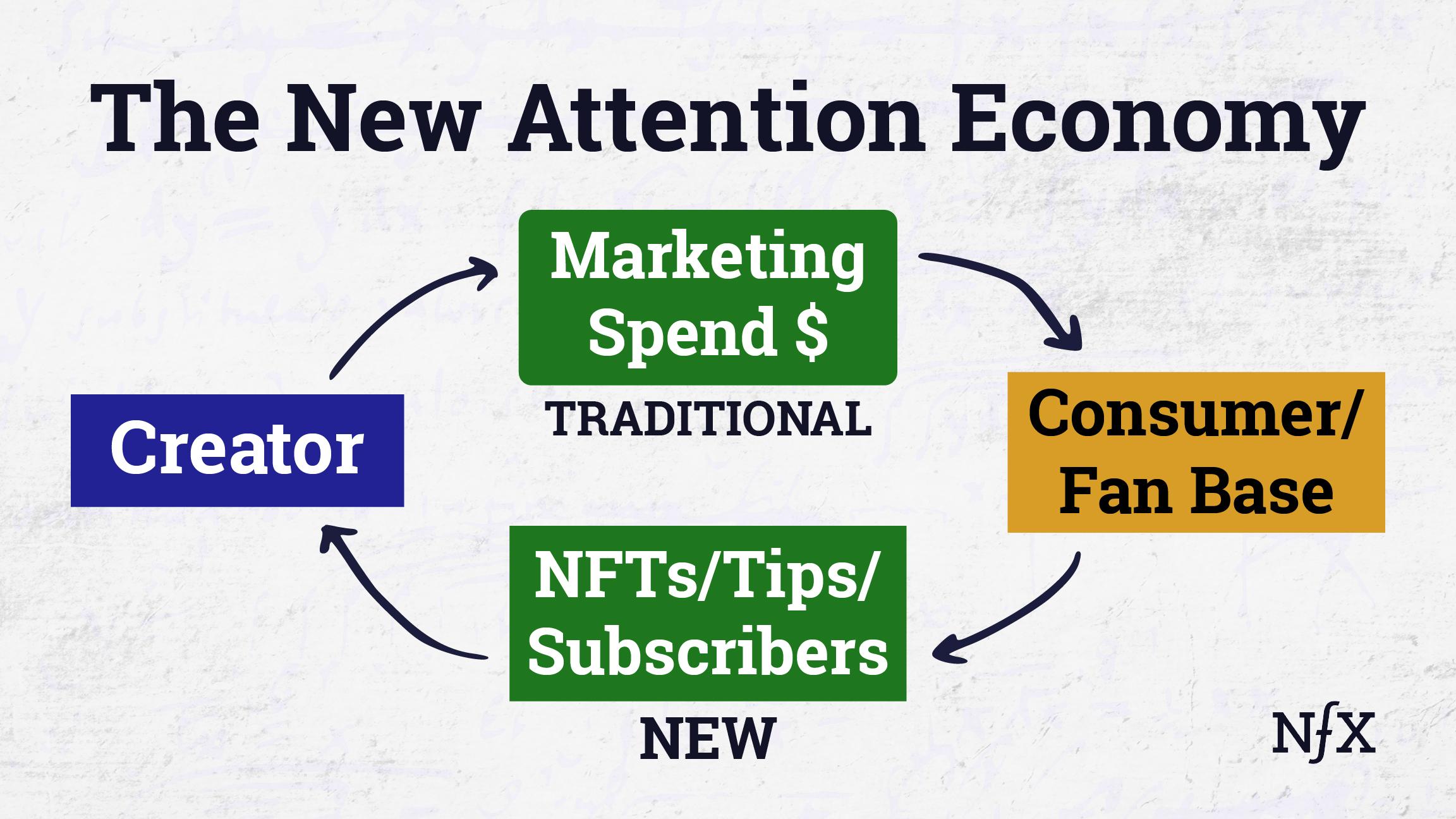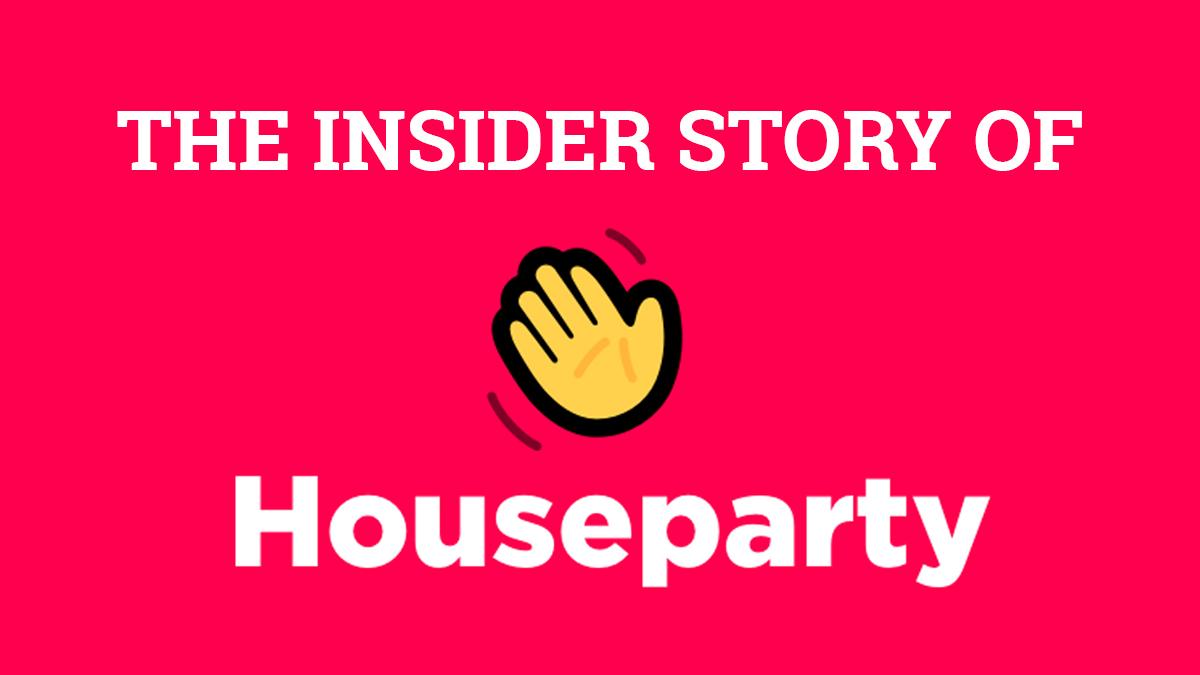

In the last two months, the video app Houseparty has grown 1600% to become the #1 social app in 82 countries, including the U.S., with hundreds of millions of users. Its success, however, has been many years in the making.
Ben Rubin, the Houseparty Founder and former CEO, and I have known each other since 2013. I was an early seed investor in Ben’s company and went on much of the journey with him. In fact, Gigi Levy-Weiss, my Partner at NFX, was already an investor and advisor to Ben before I showed up.
Ben and I sat down together for this NFX podcast. It’s the real story that most Founders never get to hear. We’ve organized some of his key insights below, but the podcast conversation itself is worth listening to in its entirety. Ben’s candor and depth of thinking is rare, and provides a masterclass in product, pivots, and perseverance. Every Founder will benefit from hearing about the ups and downs of building Meerkat-Houseparty, and about his new work communications network, /Talk.
The Founder Journey of Houseparty
- Life on Air was originally founded in Israel in 2012 by Ben Rubin & Itai Danino.
- Their organizing principle was “Bringing people together — in the most human way possible — when they are physically apart.”
- Initially built two livestream apps: AIR and Yevvo. Built an audience of hundreds of thousands of students, but it stopped growing.
- Brainstormed new use cases with James Currier (NFX) and noticed users live streaming concerts on Twitter with the app.
- Pivoted to Meerkat, a mobile broadcast service that made live streaming one-click simple.
- Built the product in 60 days. Launched on Product Hunt in February 2015.
- Meerkat was the darling of SXSW in March 2015 and hit 2 million users.
- Subject of an intense VC bidding war leading to a $12M raise with Greylock and Josh Elman (NFX participated).
- At SXSW, Twitter shuts Meerkat out of the API because it competes with Periscope (Twitter had purchased Periscope two months prior).
- Ben does a usage analysis and realizes that he needs to pivot Meerkat because very few users are also persistent broadcasters and the majority of frequent broadcasters are influencers, media, or celebrities. Twitter and Facebook will dominate those groups, leaving Meerkat limited room to grow. Ben also realized that users could not easily engage and connect with each other inside the app. So not clear it was fulfilling the goal of the company — to connect people when they cannot be physically together.
- In early 2015, Ben told investors that Meerkat was not going to work.
- Pivot to Houseparty. Ben and team came up with the product concept around the idea of a houseparty — a social network built around live streaming that allows groups to quickly jump online with friends and also makes it easy to discover and join ongoing house parties.
- Houseparty takes off, grows to 1 million DAU within a year. The company raises a $50 million round seven days after launch and plans to go huge.
- Then growth slows. Houseparty is growing, but not enough to monetize or raise more.
- 8 years and $70M later, the company now faces the choice of another pivot or a sale. They end up selling to Epic Games in June 2019.
- In 2020, Houseparty’s growth skyrockets as a result of COVID-19 and global shelter-in-place orders. Houseparty becomes the No. 1 Social app in 82 countries, including the U.S. App Store. It was also the No. 3 Social app on the U.S. Google Play store. It draws 50 million new users in one month alone and quickly reaches hundreds of millions of users total. The team has added a bunch of games and features for key users that end up driving significant growth and stickiness during shelter-in-place.
- Ben’s original mission to “bring people together when they are physically apart” seems more prescient than ever, and he is proud of what Houseparty became.
- Today, Ben is running a new startup called /Talk.
How to build products in this next frontier that can “bring people together, in the most human way possible, when they are physically apart.”
- The next frontier of place and space is digital. I started thinking about spaces when I was studying architecture. I like how space can create new opportunities for people to interact in ways that create a meaningful experience. In my third year studying, a light bulb went on for me, and I realized the next frontier for designing space and interactions was digital. Creating presence and shared intimacy is a huge passion. I am still an architect, just in a new dimension.
- Create open space in order to see. How do you create a shared language within a product team that allows for an open space to see beyond what’s there — to be okay with answers that are not there? What if there’s a process where answers present themselves as if we’re playing music, and feeling what’s wrong and what’s right?
- Define the questions, not the answers. My product specs are one page. It talks about rhythm, attitude, and a bit about melody. I find ways, through explaining the high-level goal and problem — and through examples — to leave open space for the discussion among the team. They need a space to jam in order to reach the answer. With this approach, I’m trying to move away from defining the answers, to defining the questions. This is a bit of a cliche, but it’s what I want to be asking, and it’s the right way to help teams build great products.
- Great product development is actually a sensory exercise. Metaphors like music and food are tools I use daily to explain to my team what is the attitude and approach I want them to take. Things that are sensory can communicate a feeling, which is what we want in a great product. When you think about a product as a song or a dinner, when I think about consumer products, there are inspiring atomic units of consumer products that you can learn from everywhere — from a favorite bodega you go to, from a restaurant menu, from a song. All of these are things that can create emotional attachment. There is something about their location, their timing, the narrative they are telling, that makes them successful.
- Adding more dishes to the menu will not make a restaurant successful. Making a song longer will not make it a hit. You can learn a lot from the cool, fast-casual restaurant that is only 500 square feet but is killing it. There is something about it that works. You can deduce the atomic elements from it and apply it to your own product.
- Zero-to-one product development is like jazz. For example, Miles Davis said that in jazz, when you think you play the wrong note, it’s the next note that dictates if the previous one was actually wrong. Product development, especially in the zero to one stage, is jazz. Nobody can sit behind a computer, write all the notes down, add the drum tracks, the bass, and say “I’m going to have a hit”. That’s not how it goes.
- If you are not growing, then don’t add features. It’s not going to work. If you are not growing, then adding new features is not going to help. The only time you need to add features is if you’re growing like crazy and you have more and more users starting to use your product and the new users are different from the earlier users. So you add features for them to match their new needs, but it has to be organically generated. If you are not growing, you should ask deeper questions.
- Find hidden growth opportunities. Hidden growth opportunities are powerful and often magical. Look for them before others find them. We found it in the Twitter API for Meerkat. The API was open and there were so many cool things to do with it for Meerkat.
- At the same time, not controlling your main growth channel is bad. We learned that the hard way when Twitter shut off the API as Meerkat was taking off. We were competing with Twitter’s acquisition of Periscope and they were open in stating that competing products could not use the API. That forced us to pivot.
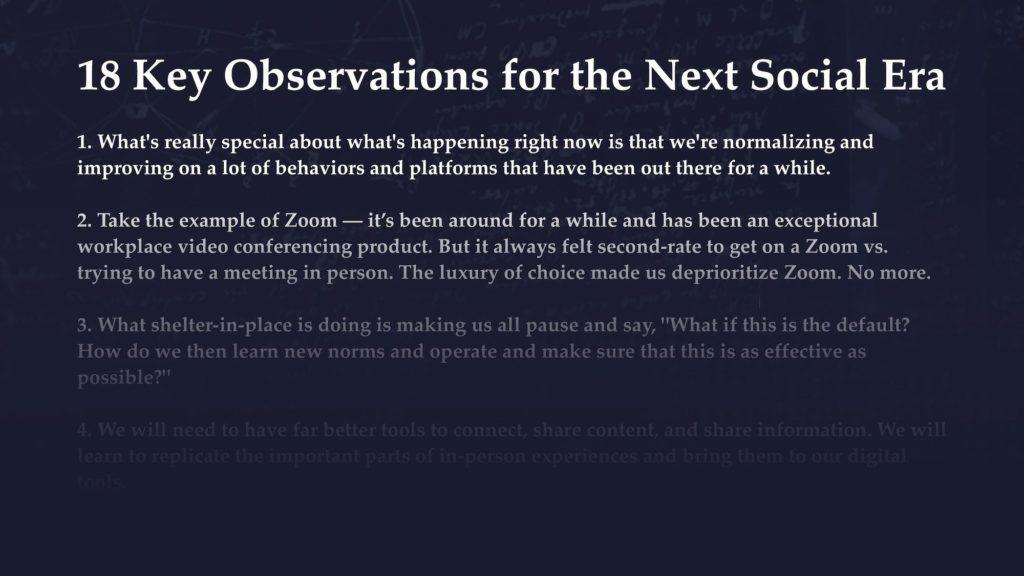

A Sneak Peek Inside Ben’s Mind
- Focus on the origin, not the aim. People too often focus on the aim and not the origin. This is something that my wife says, and I 100% believe it. Founders too often focus on “I am going to do one, two, and three and that will get me to four.” That’s the aim. Yes, I’m very much attached to the idea of a good business that is able to sustain itself and continue the message that you want to carry into the world. But it has to come from inside me. That’s the origin. Who am I? What am I standing for? What do I love about myself? What are the things that I actually enjoy doing, being present, doing. You can be so focused on an image in the distance of what you hope to do, that you do not ask yourself what do you love about yourself and what do you want to do.
- Unpolished is okay! How quickly you release an app is actually tied to the founder’s level of security and confidence. For our first app, we took 12 months and polished and trimmed everything so it was perfect. Our second app took 4 months. Our third took 60 days and our next POC took 30 days. You figure out there are ways to get them out there faster. That’s OK because you are still giving people the authenticity of your idea and it wins them over. This is a key part of a founder’s journey and it brings out the good side of you.
- If your melody is catchy, people will dance. You get to a place where you don’t really care about what people think about you or say. We wanted to do something cool and put it out there — something that captured and reflected our personality. If your melody is catchy, then it will get people to dance. Consumer products are the same. People are okay with unpolished products that do really cool, new things.
- Back to Back: Ben’s highest high during the Houseparty journey. My highest high was the end of 2015. I got a push notification from our POC version of Houseparty. I was baking bread. I was listening to the Drake song “Back to Back” and kneading my dough. I get notifications from Ryan Cooley and Will Dennis. I swipe in. Ryan is doing his thing. Will is doing his thing. One of them is shirtless. It was a real genuine moment. And it dawned on me that we were going to have a back-to-back hit. It was like, “Oh my God. This is going to work.” It was knowing you are building something true and unique and special and it has its own life. And you are like, wow, with Houseparty we are going to have back-to-back hits, this is going to take off just like Meerkat did.
- And the lowest low. The lowest low, yeah, was definitely the understanding that I would have to sell and making peace with it and understanding that this was the right course of action. But then I did get excited for what it meant for people, and I started to see it as a win win win.
- Startups are self-development machines on steroids. Because you are experiencing so many things so rapidly, so intensely that it gives you so many opportunities to examine yourself and understand what makes you tick. And then to try to understand your team and to understand the people you are co-creating with and that learning about yourself and about them is ultimately the reward for your own transformation. And, yes, that transformation well done could lead to a lot of money. It could lead to a beautiful product that touches hundreds of millions of people like Houseparty does today.
How to Recalibrate When Things Get Hard
- That Friday night 7PM phone call. I remember one night, we were at SXSW, the Twitter team calls us to tell us they are going to close the API. The guidelines of the API were that you couldn’t use it for something that was competitive with Twitter. This cut off the biggest source of our growth. The guys from Twitter were very cool about it and I understood their POV. They needed to protect their investment. Instead of getting angry or complaining, I started to analyze what we had and what we didn’t have to work with from there.
- If you cannot get the average person to use your product on a daily basis, it’s not going to work. With Meerkat, the app was still growing. But we took a step back and looked at the situation and saw a liability. Twitter was launching their own live video product. Facebook was about to launch Facebook Live. We looked at the use cases our competitors would go into. We mapped our two million users and separated between influencers, media, and news. We saw there was no retention of broadcasters for the 99% of people that are not media, celebs, and news. The only daily use case would be celebs, media, and news. If both Twitter and Facebook were going to fight for that, then we didn’t have a business. If you cannot get the average person to use your product on a daily basis, it’s not going to work.
- Have the hard conversation. We told the board about the problem. We had raised $14 million a few months before. We were still growing 20 to 30% a month so we probably could have raised more. There was a thesis that Facebook might want to acquire us. But we knew we needed to pivot. It was a hard conversation. But I give the board credit for understanding and being supportive.
- Just deal with the reality as it presents itself. I said to the board, “Guys, I’m not gonna run from the numbers. I’m looking for the problems, I’m looking for the weaknesses and I have found a serious weakness.” Yeah. And you could have gone for another four or five or six months before anybody would have known. You’re not scared of it, and you’re not pretending. You’re not pretending so that you can go raise another bunch of money — you’re honest all the way through. You tell people this is not working. “We’ve got to pivot.”
Learnings From Evolving Meerkat into Houseparty
- Metaphors can create product vision. We came up with a metaphor of a Houseparty to describe the product we wanted to create. It was a wonderful metaphor. The statement and manifesto of the product is a house party. So you can imagine the team asking, right on the heels of Meerkat, “Why can’t we broadcast the conversations?” That’s where we started having a clear vision of what makes a great house party. Within a year of that board meeting where I said we have to pivot, we had 1 million daily active users (DAU) on Houseparty.
- At 1 million DAU, Sequoia comes in and leads a $50 million round with Greylock and Aleph. After that round, we saw the product growing with great engagement and incredible community but 18 months later, with all of that good stuff, the growth was just not enough. We needed to sell or pivot.
- Have the hard conversation — again. At that point, we had $70 million in the bank. Houseparty was the third pivot. We were eight years in. And it becomes a really hard conversation between you and your investors, and also your team, about whether you should do another pivot. We agreed that we needed to sell. The team had been troopers. The company had so many different cultures. You just need to say okay, this is where the journey ends. We had a great team and a terrific product and we knew we could provide fantastic value to someone.
- No regrets over a great fit. Sima Sitani drove an incredible M&A process and thanks to her we ended up selling Houseparty to Epic Games, which was a perfect fit because a lot of people were using Houseparty while playing Fortnite and other games and we share some key demographics. I feel super proud now. How many people get to say they built a product that has hundreds of millions of people using it. And I have no regrets today.
Back at it with Ben’s new company, /Talk
- /Talk (Slashtalk.com) is a product for fast, decentralized conversations. We are an anti-meeting tool. We believe most meetings can be eliminated if the right people are connected at the right time to discuss the right topics, for just as long as necessary.
- There’s this new emerging use case of quick, unscheduled calls. But there’s no organizing principle for it. This is actually where work is getting done. This is where people get together to review code, where an engineer and a designer sees where a spec is missing something, this is where two people review why they’re getting errors in the compilers. And if we believe that organizations and work are going to continue to decentralize, these use cases are going to grow more and more. But there’s no inbox for any of it.
- Meetings in most cases suppress the part of us that builds and gives room to the part of us that talks. With /talk, we break down the meeting into the building blocks of the topics, the people, and the time. We are trying to reorganize conversations to be topic-driven and fast. It totally deconstructs how conversations work. It’s really cool.
As Founders ourselves, we respect your time. That’s why we built BriefLink, a new software tool that minimizes the upfront time of getting the VC meeting. Simply tell us about your company in 9 easy questions, and you’ll hear from us if it’s a fit.

